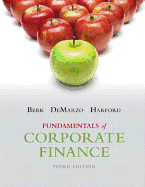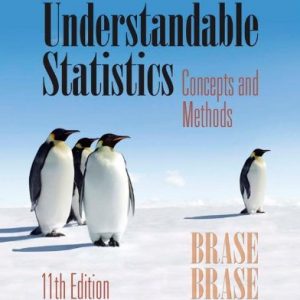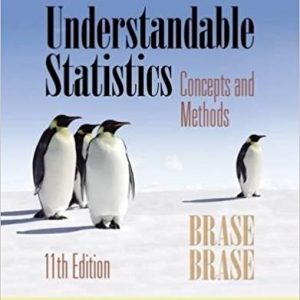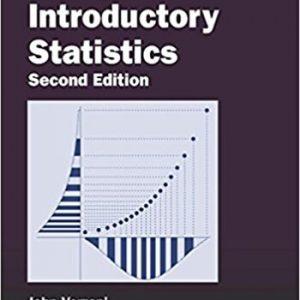This is completed downloadable of Solutions manual for Fundamentals of Corporate Finance 3e by Berk 9780133576870

Product Details:
- ISBN-10 : 1269945645
- ISBN-13 : 978-0133507911
- Author:
Fundamentals of Corporate Finance ’s applied perspective cements your understanding of modern-day core principles, focusing on problem solving and real-life financial management practices—all within a clear valuation framework.
Table of Content:
- Part 1 Introduction
- Chapter 1 Corporate Finance and the Financial Manager
- Learning Objectives
- 1.1 Why study finance?
- 1.2 The three types of firms
- Sole traders
- Partnerships
- Corporations
- Tax implications for corporate entities
- 1.3 The financial manager
- Making investment decisions
- Making financing decisions
- Managing short-term cash needs
- The goal of the financial manager
- 1.4 The financial manager’s place in the corporation
- The corporate management team
- Ethics and incentives in corporations
- 1.5 The stock market
- The largest stock markets
- Traditional trading venues
- Dark pools
- 1.6 Financial institutions
- The financial cycle
- Types of financial institutions
- Roles of financial institutions
- Mylab Finance
- Problems
- The three types of firms
- The financial manager
- The financial manager’s place in the corporation
- The stock market
- Financial institutions
- Notes
- Chapter 2 Introduction to financial statement analysis
- Learning Objectives
- 2.1 Firms’ disclosure of financial information
- International financial reporting standards
- Preparation of financial statements
- Types of financial statements
- 2.2 The balance sheet
- Assets
- Liabilities
- Shareholders’ equity
- 2.3 Balance sheet analysis
- Market-to-book ratio
- Debt–equity ratio
- Enterprise value
- Other balance sheet information
- 2.4 The income statement
- Earnings calculations
- 2.5 Income statement analysis
- Profitability ratios
- Asset efficiency
- Working capital ratios
- EBITDA
- Leverage ratios
- Investment returns
- The DuPont Identity
- Valuation ratios
- 2.6 The statement of cash flows
- Operating activity
- Investment activity
- Financing activity
- 2.7 Other financial statement information
- Management discussion and analysis
- Statement of changes in equity
- Notes to the financial statements
- 2.8 Financial reporting in practice
- Enron
- HIH insurance
- Centro
- CLERP 9 and the ASX Good Corporate Governance Principles
- The financial statements: A useful starting point
- Mylab finance
- Review Questions
- Problems
- Firms’ disclosure of financial information
- The balance sheet
- Balance sheet analysis
- The income statement and income statement analysis
- The statement of cash flows
- Accounting manipulation
- Data Case
- Notes
- Part 2 Interest rates and valuing cash flows
- Chapter 3 Time value of money: an introduction
- Learning Objectives
- 3.1 Cost–benefit analysis
- Role of the financial manager
- Quantifying costs and benefits
- 3.2 Market prices and the valuation principle
- The Valuation Principle
- Why there can be only one competitive price for a good
- 3.3 The time value of money and interest rates
- The time value of money
- The interest rate: Converting cash across time
- Timelines
- 3.4 Valuing cash flows at different points in time
- Rule 1: Comparing and combining values
- Rule 2: Compounding
- Rule 3: Discounting
- Mylab Finance
- Review Questions
- Problems
- Cost–benefit analysis
- Market prices and the Valuation Principle
- The time value of money and interest rates
- Valuing cash flows at different points in time
- Notes
- Chapter 4 Time value of money: valuing cash flow streams
- Learning Objectives
- 4.1 Valuing a stream of cash flows
- Applying the rules of valuing cash flows to a cash flow stream
- 4.2 Perpetuities
- 4.3 Annuities
- Present value of an annuity
- Future value of an annuity
- 4.4 Growing cash flows
- Growing perpetuity
- Growing annuity
- 4.5 Solving for variables other than present value or future value
- Solving for the cash flows
- Rate of return
- Solving for the number of periods
- 4.6 Non-annual cash flows
- Summing it up
- Mylab Finance
- Review Questions
- Problems
- Valuing a stream of cash flows
- Perpetuities
- Annuities
- Growing cash flows
- Solving for variables other than present value or future value
- Valuing cash flow streams with non-annual cash flows
- Data case
- Notes
- Chapter 5 Interest Rates
- Learning Objectives
- 5.1 Interest rate quotes and adjustments
- The effective annual rate
- Adjusting the discount rate to different time periods
- Annual percentage rates
- 5.2 Application: discount rates and loans
- Calculating loan payments
- Calculating the outstanding loan balance
- 5.3 The determinants of interest rates
- Inflation and real versus nominal rates
- Investment and interest rate policy
- The yield curve and discount rates
- The yield curve and the economy
- 5.4 The opportunity cost of capital
- Mylab Finance
- Review Questions
- Problems
- Interest rate quotes and adjustments
- Application: Discount rates and loans
- The determinants of interest rates
- The opportunity cost of capital
- Notes
- Chapter 6 Bond valuation
- Learning Objectives
- 6.1 Bond terminology
- 6.2 Zero-coupon bonds
- Zero-coupon bond cash flows
- Yield to maturity of a zero-coupon bond
- Risk-free interest rates
- 6.3 Coupon bonds
- Coupon bond cash flows
- Yield to maturity of a coupon bond
- Coupon bond price quotes
- 6.4 Why bond prices change
- Interest rate changes and bond prices
- Time and bond prices
- Interest rate risk and bond prices
- Bond prices in practice
- 6.5 Corporate bonds
- Credit risk
- Corporate bond yields
- Bond ratings
- Credit spreads
- Mylab Finance
- Review Questions
- Problems
- Bond terminology
- Zero-coupon bonds
- Coupon bonds
- Why bond prices change
- Corporate bonds
- Data Case
- Notes
- Chapter 7 Share valuation: the dividend-discount model
- Learning Objectives
- 7.1 Share basics
- Stock market reporting: Share quotes
- Ordinary shares
- Preference shares
- 7.2 The dividend-discount model
- A one-year investor
- Dividend yields, capital gains and total returns
- A multiyear investor
- Dividend-discount model equation
- 7.3 Estimating dividends in the dividend-discount model
- Constant dividend growth
- Dividends versus investment and growth
- Changing growth rates
- Value drivers and the dividend-discount model
- 7.4 Limitations of the dividend-discount model
- Uncertain dividend forecasts
- Non-dividend-paying shares
- 7.5 Share repurchases and the total payout model
- 7.6 Putting it all together
- Mylab Finance
- Review Questions
- Problems
- Share basics
- The dividend-discount model
- Estimating dividends in the dividend-discount model
- Share repurchases and the total payout model
- Notes
- Part 3 Valuation and the firm
- Chapter 8 Investment decision rules
- Learning Objectives
- 8.1 The NPV decision rule
- Net present value
- The NPV decision rule
- 8.2 Using the NPV rule
- Organising the cash flows and computing the net present value
- The NPV profile
- Measuring sensitivity with the internal rate of return
- Alternative rules versus the NPV rule
- 8.3 Alternative decision rules
- The payback rule
- The IRR rule
- Modified internal rate of return
- 8.4 Choosing between projects
- Differences in scale
- Timing of the cash flows
- 8.5 Evaluating projects with different lives
- Important considerations when using the equivalent annual annuity
- 8.6 Choosing among projects when resources are limited
- Evaluating projects with different resource requirements
- 8.7 Putting it all together
- Mylab Finance
- Review Questions
- Problems
- The NPV decision rule
- Using the NPV rule
- Alternative decision rules
- Evaluating projects with different lives
- Choosing among projects when resources are limited
- Data case
- Notes
- Chapter 9 Fundamentals of capital budgeting
- Learning Objectives
- 9.1 The capital budgeting process
- 9.2 Forecasting incremental earnings
- Operating expenses versus capital expenditures
- Incremental revenue and cost estimates
- Taxes
- Incremental earnings forecast
- 9.3 Determining incremental free cash flow
- Converting from earnings to free cash flow
- Calculating free cash flow directly
- Calculating the net present value
- 9.4 Other effects on incremental free cash flow
- Opportunity costs
- Project externalities
- Sunk costs
- Adjusting free cash flow
- Replacement decisions
- 9.5 Analysing the project
- Sensitivity analysis
- Break-even analysis
- Scenario analysis
- 9.6 Real options in capital budgeting
- Option to delay
- Option to expand
- Option to abandon
- Mylab Finance
- Review Questions
- Problems
- Forecasting incremental earnings
- Determining incremental free cash flow
- Other effects on incremental free cash flows
- Analysing the project
- Real options in capital budgeting
- Data Case
- Notes
- Chapter 10 Share valuation: a second look
- Learning Objectives
- 10.1 The discounted free cash flow model
- Valuing the enterprise
- Implementing the model
- Connection to capital budgeting
- 10.2 Valuation based on comparable firms
- Valuation multiples
- Limitations of multiples
- Comparison with discounted cash flow methods
- Share valuation techniques: The final word
- 10.3 Information, competition and share prices
- Information in share prices
- Competition and efficient markets
- Lessons for investors and corporate managers
- The efficient markets hypothesis versus no arbitrage
- 10.4 Individual biases and trading
- Excessive trading and overconfidence
- Hanging on to losers and the disposition effect
- Investor attention, mood and experience
- Mylab Finance
- Review Questions
- Problems
- The discounted free cash flow model
- Valuation based on comparable firms
- Information, competition and share prices
- Individual biases and trading
- Data Case
- Notes
- Part 4 Risk and return
- Chapter 11 Risk and return in capital markets
- Learning Objectives
- 11.1 A first look at risk and return
- 11.2 Historical risks and returns of shares
- Computing historical returns
- Average annual returns
- The variance and volatility of returns
- The normal distribution
- 11.3 The historical trade-off between risk and return
- The returns of large portfolios
- The returns of individual shares
- 11.4 Common versus independent risk
- Theft versus earthquake insurance: An example
- Types of risk
- 11.5 Diversification in share portfolios
- Unsystematic versus systematic risk
- Diversifiable risk and the risk premium
- The importance of systematic risk
- Mylab Finance
- Review Questions
- Problems
- Historical risks and returns of shares
- Common versus independent risk
- Diversification in share portfolios
- Notes
- Chapter 12 Systematic risk and the equity risk premium
- Learning Objectives
- 12.1 The expected return of a portfolio
- Portfolio weights
- Expected portfolio return
- 12.2 The volatility of a portfolio
- Diversifying risks
- Measuring shares’ co-movement: Correlation
- Computing a portfolio’s variance and standard deviation
- The volatility of a large portfolio
- 12.3 Measuring systematic risk
- Role of the market portfolio
- Stock market indices as the market portfolio
- Market risk and beta
- Estimating beta from historical returns
- 12.4 Putting it all together: the capital asset pricing model
- The CAPM equation relating risk to expected return
- The security market line
- The Capital Asset Pricing Model and portfolios
- Summary of the Capital Asset Pricing Model
- The big picture
- Mylab Finance
- Review Questions
- Problems
- The expected return of a portfolio
- The volatility of a portfolio
- Measuring systematic risk
- Putting it all together: The Capital Asset Pricing Model
- Notes
- Chapter 13 The cost of capital
- Learning Objectives
- 13.1 A first look at the weighted average cost of capital
- The firm’s capital structure
- Opportunity cost and the overall cost of capital
- Weighted averages and the overall cost of capital
- Weighted average cost of capital calculations
- 13.2 The firm’s costs of debt and equity capital
- Cost of debt capital
- Cost of preference share capital
- Cost of ordinary share capital
- 13.3 A second look at the weighted average cost of capital
- Weighted average cost of capital equation
- Weighted average cost of capital in practice
- Methods in practice
- 13.4 Using the weighted average cost of capital to value a project
- Key assumptions
- WACC method application: Extending the life of a mine
- Summary of the WACC method
- 13.5 Project-based costs of capital
- Cost of capital for a new acquisition
- Divisional costs of capital
- 13.6 When raising external capital is costly
- Mylab Finance
- Review Questions
- Problems
- A first look at the weighted average cost of capital
- The firm’s costs of debt and equity capital
- A second look at the weighted average cost of capital
- Using the weighted average cost of capital to value a project
- Project-based costs of capital
- When raising external capital is costly
- Data Case
- Notes
- Part 5 Long-term financing
- Chapter 14 Raising capital
- Learning Objectives
- 14.1 Equity financing for private companies
- Sources of funding
- Securities and valuation
- Exiting an investment in a private company
- 14.2 Taking your firm public: The initial public offering
- Advantages and disadvantages of going public
- Primary and secondary IPO offerings
- Other IPO types
- 14.3 IPO puzzles
- Underpriced IPOs
- ‘Hot’ and ‘cold’ IPO markets
- High cost of issuing an IPO
- Poor post-IPO long-run share performance
- 14.4 Raising additional capital: The seasoned equity offering
- SEO process
- SEO price reaction
- SEO costs
- MyLab Finance
- Review questions
- Problems
- Equity financing for private companies
- Taking your firm public: The initial public offering
- Raising additional capital: The seasoned equity offering
- Notes
- Chapter 15 Debt Financing
- Learning Objectives
- 15.1 Corporate debt
- Private debt
- Public debt
- 15.2 Bond covenants
- Types of covenants
- Advantages of covenants
- 15.3 Repayment provisions
- Call provisions
- Sinking funds
- Convertible provisions
- MyLab Finance
- Review questions
- Problems
- Corporate debt
- Repayment provisions
- Notes
- Part 6 Capital structure and valuation
- Chapter 16 Capital structure
- Learning Objectives
- 16.1 Capital structure choices
- Capital structure choices across industries
- Capital structure choices within industries
- 16.2 Capital structure in perfect capital markets
- Application: Financing a new business
- Leverage and firm value
- The effect of leverage on risk and return
- Home-made leverage
- Leverage and the cost of capital
- Modigliani and Miller and the real world
- 16.3 Debt and taxes
- The interest tax deduction and firm value
- Value of the interest tax shield
- The interest tax shield with permanent debt
- Leverage and the weighted average cost of capital with taxes
- Debt and taxes: The bottom line
- 16.4 The costs of bankruptcy and financial distress
- Direct costs of bankruptcy
- Indirect costs of financial distress
- 16.5 Optimal capital structure: The trade-off theory
- Differences across firms
- Optimal leverage
- 16.6 Additional consequences of leverage: Agency costs and information
- Agency costs
- Debt and information
- 16.7 Capital structure: Putting it all together
- MyLab Finance
- Review Questions
- Problems
- Capital structure in perfect capital markets
- Debt and taxes
- Optimal capital structure: The trade-off theory
- Additional consequences of leverage: Agency costs and information
- Notes
- Chapter 17 Payout policy
- Learning Objectives
- 17.1 Cash distributions to shareholders
- Dividends
- Share repurchases
- 17.2 Dividends versus share repurchases in a perfect capital market
- Alternative policy 1: Pay a dividend with excess cash
- Alternative policy 2: Share repurchase (no dividend)
- Alternative policy 3: High dividend (equity issue)
- Modigliani–Miller and dividend policy irrelevance
- Dividend policy with perfect capital markets
- 17.3 Dividends and share repurchases under personal taxes
- Taxes on dividends and capital gains
- Dividend imputation
- Taxation of capital gains
- Dividends versus capital gains
- Share repurchases structured as dividends
- Optimal dividend policy with taxes
- 17.4 Payout versus retention of cash
- Retaining cash with perfect capital markets
- Retaining cash with imperfect capital markets
- 17.5 Signalling with payout policy
- Dividend smoothing
- Dividend signalling
- Signalling and share repurchases
- 17.6 Dividend reinvestment plans and bonus issues
- Dividend reinvestment plans
- Bonus issues
- 17.7 Dividend imputation and share valuation
- Valuation and franking credits: The theory
- Estimating gamma
- Valuation and franking credits: Market practice
- 17.8 Advice for the financial manager
- MyLab Finance
- Review questions
- Problems
- Cash distributions to shareholders
- Dividends versus share repurchases in a perfect capital market
- The tax disadvantage of dividends
- Payout versus retention of cash
- Signalling with payout policy
- Dividend reinvestment plans and bonus issues
- Dividend imputation and share valuation
- Data case
- Notes
- Part 7 Financial planning
- Chapter 18 Financial modelling and pro-forma analysis
- Learning Objectives
- 18.1 Goals of long-term financial planning
- Identify important linkages
- Analyse the impact of potential business plans
- Plan for future funding needs
- 18.2 Forecasting financial statements: The per cent of sales method
- Per cent of sales method
- Pro-forma income statement
- Pro-forma balance sheet
- Making the balance sheet balance: Net new financing
- Choosing a forecast target
- 18.3 Forecasting a planned expansion
- KMS Designs’ expansion: Financing needs
- KMS Designs’ expansion: Pro-forma statement
- Forecasting the balance sheet
- 18.4 Growth and firm value
- Sustainable growth rate and external financing
- 18.5 Valuing the expansion
- Forecasting free cash flows
- KMS Designs’ expansion: Effect on firm value
- MyLab Finance
- Review questions
- Problems
- Forecasting a planned expansion
- Growth and firm value
- Valuing the expansion
- Notes
- Chapter 19 Working capital management
- Learning Objectives
- 19.1 Overview of working capital
- The cash cycle
- Working capital needs by industry
- Firm value and working capital
- 19.2 Trade credit
- Trade credit terms
- Trade credit and market frictions
- Managing float
- 19.3 Receivables management
- Determining the credit policy
- Monitoring accounts receivable
- 19.4 Payables management
- Determining accounts payable days outstanding
- Stretching accounts payable
- 19.5 Inventory management
- Benefits of holding inventory
- Costs of holding inventory
- 19.6 Cash management
- Motivation for holding cash
- Alternative investments
- MyLab Finance
- Review questions
- Problems
- Overview of working capital
- Trade credit
- Receivables management
- Payables management
- Inventory management
- Data case4
- Notes
- Part 8 Special topics
- Chapter 20 Option applications and corporate finance
- Learning Objectives
- 20.1 Option basics
- Option contracts
- Share option quotations
- Options on other financial securities
- 20.2 Option payoffs at expiration
- The long position in an option contract
- The short position in an option contract
- Profits for holding an option to expiration
- Returns for holding an option to expiration
- 20.3 Factors affecting option prices
- Exercise price and share price
- Option prices and the exercise date
- Option prices and the risk-free rate
- Option prices and volatility
- 20.4 The Black Scholes option pricing formula
- 20.5 Put call parity
- Portfolio insurance
- 20.6 Options and corporate finance
- MyLab Finance
- Review questions
- Problems
- Option payoffs at expiration
- Factors affecting option prices
- Put call parity
- Options and corporate finance
- Data Case
- Notes
- Chapter 21 Mergers and acquisitions
- Learning Objectives
- 21.1 Background and historical trends
- Merger waves
- Types of mergers
- 21.2 Market reaction to a takeover
- 21.3 Reasons to acquire
- Economies of scale and scope
- Vertical integration
- Expertise
- Monopoly gains
- Efficiency gains
- Tax savings from operating losses
- Diversification
- Earnings growth
- Managerial motives to merge
- 21.4 The takeover process
- Valuation
- The offer
- Merger ‘arbitrage’
- Tax and accounting issues
- Board and shareholder approval
- 21.5 Takeover defences
- Poison pills
- Staggered boards
- White knights
- Golden parachutes
- Recapitalisation
- Other defensive strategies
- 21.6 Who gets the value added from a takeover?
- The free rider problem
- Toeholds
- Leveraged buyouts
- Competition
- MyLab Finance
- Review questions
- Problems
- The takeover process
- Takeover defences
- Who gets the value added from a takeover?
- Notes
- Chapter 22 International corporate finance
- Learning Objectives
- 22.1 Foreign exchange
- The foreign exchange market
- Exchange rates
- 22.2 Exchange rate risk
- Exchange rate fluctuations
- Hedging with forward contracts
- Cash-and-carry and the pricing of currency forwards
- Hedging exchange rate risk with options
- 22.3 Internationally integrated capital markets
- 22.4 Valuation of foreign currency cash flows
- Application: Ityesi Packaging
- The Law of One Price as a robustness check
- 22.5 Valuation and international taxation
- A single foreign project with immediate repatriation of earnings
- Multiple foreign projects and deferral of earnings repatriation
- 22.6 Internationally segmented capital markets
- Differential access to markets
- Macro-level distortions
- Implications of internationally segmented capital markets
- 22.7 Capital budgeting with exchange rate risk
- Application: Ityesi Packaging
- Conclusion
- MyLab Finance
- Review questions
- Problems
- Foreign exchange
- Exchange rate risk
- Internationally integrated capital markets
- Valuation of foreign currency cash flows
- Valuation and international taxation
- Internationally segmented capital markets
- Capital budgeting with exchange rate risk
- Data Case
- Notes
- Chapter 23 Insurance and risk management
- Learning Objectives
- 23.1 Insurance
- The role of insurance: An example
- Insurance pricing in a perfect market
- The value of insurance
- The costs of insurance
- The insurance decision
- 23.2 Commodity price risk
- Hedging with vertical integration and storage
- Hedging with long-term contracts
- Hedging with futures contracts
- 23.3 Interest rate risk
- Interest rate risk measurement: Duration
- Duration-based hedging
- Swap-based hedging
- MyLab Finance
- Review questions
- Problems
- Insurance
- Commodity price risk
- Interest rate risk
- Notes





